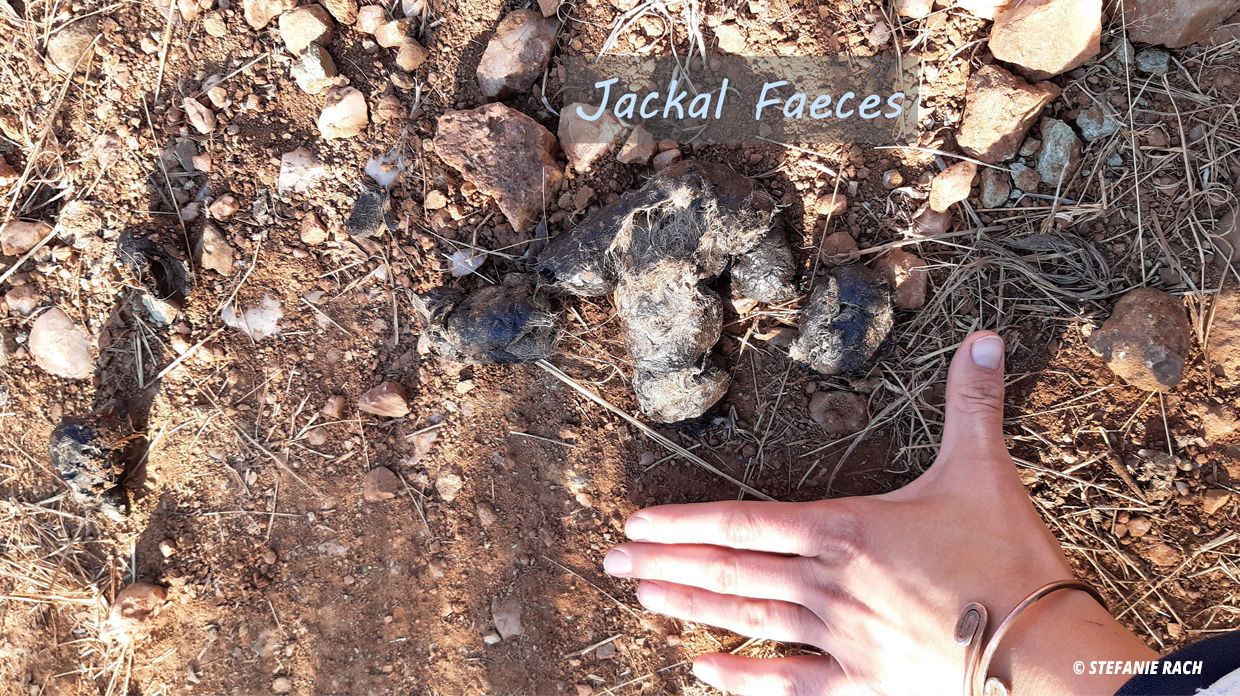Tracking Mother Nature: Fantastic Faeces And Where To Find Them
Tracking is not only concerned with the foot, hoof or paw prints left by wildlife. Scratches on a tree trunk, mud on a boulder or feeding marks on leaves and grasses are also tracks – and of course so are faeces. The size, shape, structure and location of the droppings can be used to draw conclusions about the creator.
By Stefanie Rach
On a bush walk, you will always notice clusters of small droppings of different sizes. They come from herbivores like giraffes or antelopes. These animals are ruminants: thanks to their 4 stomachs and repeated chewing, they really draw all the useful ingredients out of their food. The rest then ends up as compact pellets in the bush.
In giraffes, the droppings fall from a greater height than in antelopes. Therefore, they have more momentum when they hit the ground and bounce or roll a little further and are thus more scattered. Impala, on the other hand, use a common latrine. This is for exchanging information (e.g. about readiness to mate). The steenbuck is special position among the antelopes: it is very territorial and therefore marks its property. To do this, it digs a small depression for urine or faeces and then covers its business with soil (similar to what cats do).
![]()
Warthogs and zebras are both hindgut fermenters. Since they do not chew their food twice like ruminants, you can still clearly see the last meal in their faeces. And it is precisely this that best helps to find out who the droppings at hand came from. Zebra and warthog droppings look incredibly similar at first glance. If in doubt, break one of the droppings with the help of a stick and take a look inside: If you only see grass, a zebra was on the move here. If you see any other, sometimes not exactly identifiable things besides grass (such as parts of roots, rhizomes, berries, tubers, bulbs), a warthog is living nearby.
![]()
Even in the faeces of carnivores, remains of the last meal can still be seen, especially hair. The more calcium was ingested with the food, the more the faeces turn white over time. Hyena droppings can thus be recognised immediately. With their strong teeth, they crack open the (calcium-containing) bones of their prey to get at the nutritious bone marrow. Somewhat older hyena scat is therefore snow-white.
![]()
Jackal faeces, on the other hand, can be quickly recognised by their location: jackals prefer to use other people’s toilets. Especially on elephant and rhino dung one finds a pile of jackal scat. But they also defecate on other elevated landmarks or along the road. This serves to increase the visibility (and perhaps also the distribution of the odour) of those territory markers.

Everything in tracking, from the perfect imprint of a lion’s paw in dried mud to the droppings of giraffes, tells a story about the creatures around you. The idea of taking a closer look at animal faeces probably doesn’t arouse too much enthusiasm in many people. But in fact, through this part of tracking, you can learn a lot about the animals and understand their behaviour better.
Every problem has a solution, every solution needs support.
The problems we face are urgent, complicated, and resistant to change. Real solutions demand creativity, hard work, and involvement from people like you.

Stay in the know.
Be ready to act.
To keep up to date with our latest news, events, marches,
campaigns and fundraising activities.
